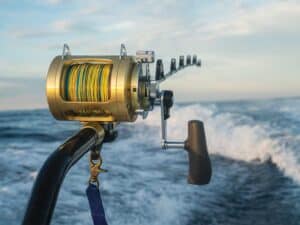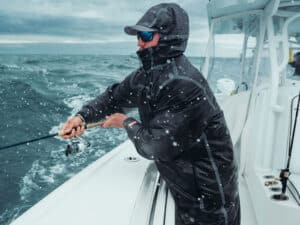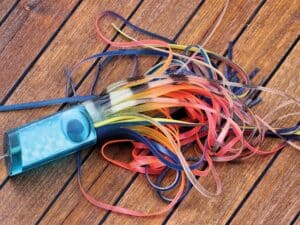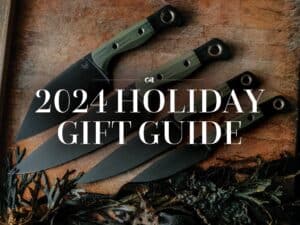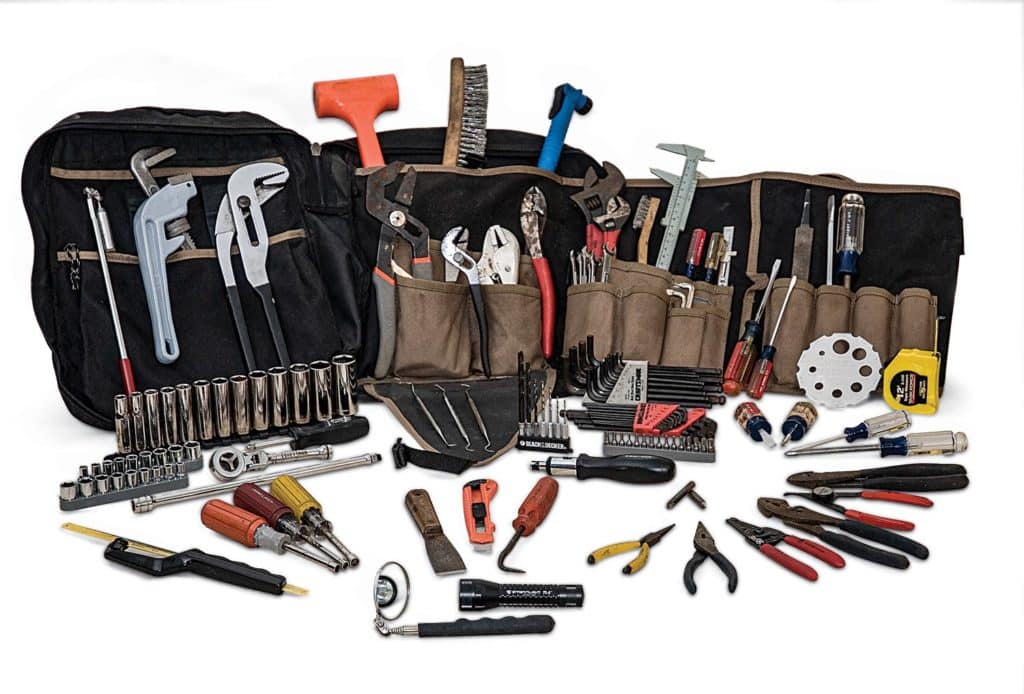
Sport-fishing captains are often magicians: We can make a bite appear when billfishing wanes—even if it’s just well-timed barracuda or bonito—or conjure from thin air a spectacular shoreside excursion when weather keeps our boats at the dock, or create a culinary illusion when the marina’s lone restaurant is unexpectedly closed.
More often, we seem to employ sleight of hand to correct perceived trip-ruining mechanical faults. But just as magicians employ clever props, working magic on a busted boat requires adequate tools. My own tool bag carries everything I’ve needed in two decades of freelance work, but nothing more, which keeps it compact and light enough to fly as checked baggage.
Watch Next: A belly-strip teaser is a great way to raise marlin and sailfish. Learn to rig one here.
Wrench and socket sets in both metric and imperial sizes become bulky and heavy. A number of repairs, particularly on fuel systems, require two of the same size wrenches as well. Of course, some sizes work for both imperial and metric, so knowing which lightens that load.
Wrenches and Sockets
My wrench list came from Wolf Gould, a mechanic at Florida Marine Tech many years ago. It starts with a set of combination wrenches from 7 to 19 millimeters, and then add: ¼-, 5/16-, 11/32-, ⅜-inch, 10 mm (you’ll want two), 7/16-, ½-, 9/16- (two), ¾-, 13/16- and ⅞-inch. I also carry a double-sided 15/16- and 1-inch open-end wrench as well as two adjustable wrenches: one 10-inch (extra-wide opening) and another 6-inch with a rubber handle for working near battery terminals. A 10-inch aluminum pipe wrench is a bit small, but it’s an acceptable compromise for lightweight travel.
Pawn shops complete mismatched wrench sets inexpensively, and you should know that 18 mm and 3/32-inch sizes are often skipped in consumer-grade sets, but both are commonly needed on board. I keep wrenches in a simple canvas roll, with duplicates sharing the same canvas pocket. Wrench sizes written in permanent marker directly on the canvas ensures that I collect them all as each job is done. And ball-end Allen keys in metric and imperial reach tight places that ordinary straight Allens can’t.
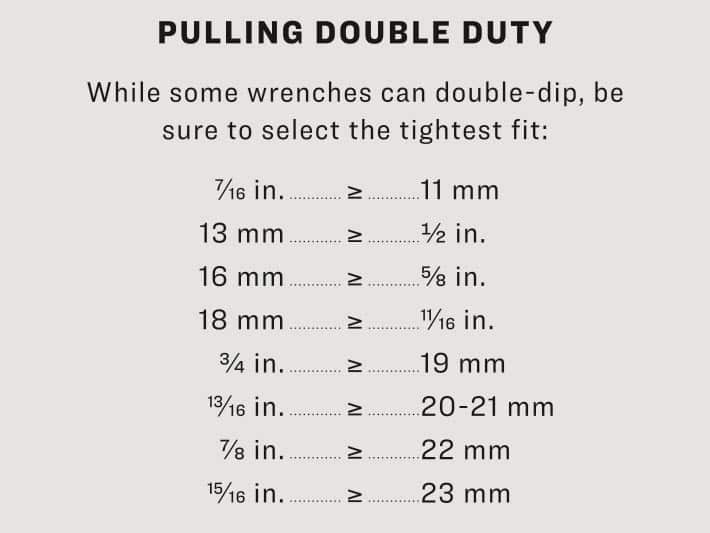
Deep-well sockets often fit where standard won’t. For ⅜-inch drive, you’ll want ⅜-, 9/16-, 7/16-, ¾- and 13/16-inch, as well as 10, 12, 13, 14, 15, 16, 17 and 18 mm. One stubby ⅜-inch drive ratchet with an articulating flex head, one longer ⅜-inch drive breaker bar, and two ⅜-inch wobble extensions can tackle most jobs. I also carry ¼-inch drive sockets starting at 5 mm and 3/16-inch, which are turned with a “wobble” hand driver, similar to a screwdriver handle that allows the socket to wiggle a bit.
Screwdrivers and Pliers
Most jobs fall within Nos. 0, 1, 2, and 3 Phillips head and ⅛-, 3/16-, and ¼-inch slotted screwdrivers, along with a No. 2 Phillips and ¼-inch stubby, and offset screwdrivers for tight places. Quarter-inch, 5/16-inch and 7 mm nut drivers won’t slip off hose clamps like screwdrivers do or risk overtightening them as a socket wrench will. A ratcheting screwdriver with bits for Torx (star-drive) sizes T10, T15, T20, T27 and T30, as well as Nos. 0 through 3 Robertson (square-drive) covers those fasteners. Add a set of hex-shank twist-drill bits, and it doubles as a hand drill. And those a tiny eyeglasses-repair kits? They can elevate your perceived magical abilities to untold heights too.
Self-adjusting 10-inch Robo-grip pliers work like arc-joint pliers, but they’re much quicker to use. I carry small 7-inch arc-joint (Channellock) pliers as well. Common 10-inch slip-joint and 6-inch needle-nose pliers, locking pliers (Vise-Grip) in both 10-inch curved-jaw and 6-inch long-nose varieties, heavy-duty wire cutters, and wire stripping and crimping tools round out my set.
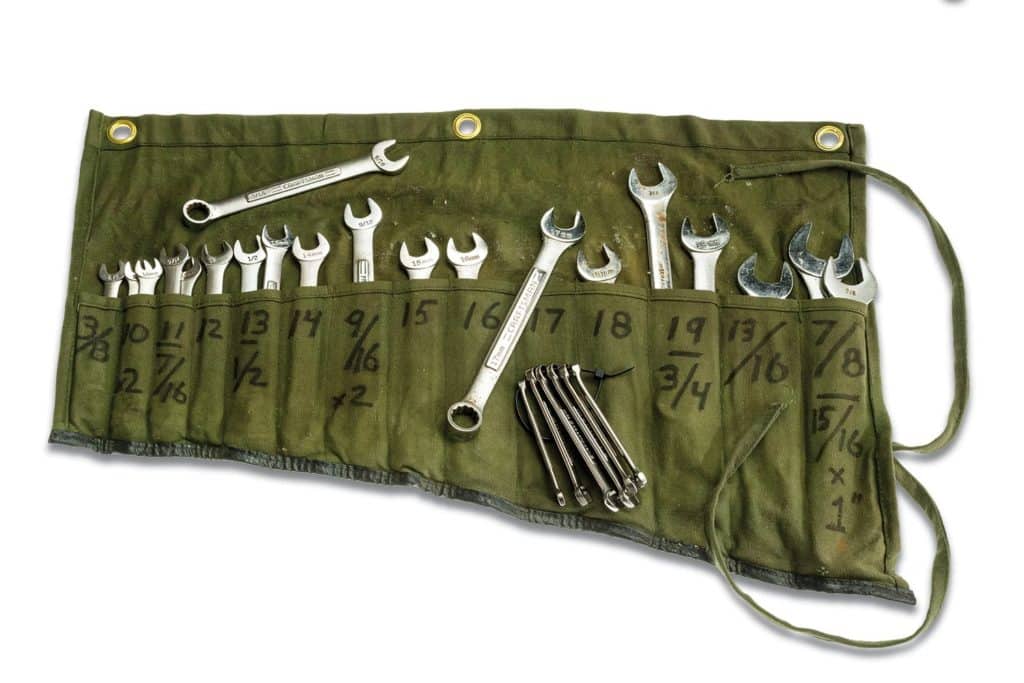
Sharps, Specialty Items and Supplies
A stiff putty knife, sharpened with a file, removes old gaskets without damaging parts or knuckles. Slide a hose hook (mine is a cotter-pin puller) around the inside of a hose to break it free for easy removal. A hacksaw with extra blades, two sizes of stainless-steel wire brushes (the wooden handles can be shortened to fit in your bag), dental picks, and a snap-blade utility knife round out the sharp and pointy necessities.
You can’t fix what you can’t see, so a telescoping mirror and a small but bright LED flashlight are essential, along with a strong telescoping retrieval magnet to recover any dropped tools or fasteners. A 16-ounce dead-blow hammer, tape measure, 6-inch stainless-steel machinist rule, plastic calipers, and indelible markers are, at times, indispensable.
A small bicycle pump is necessary for pressurizing hydraulic-steering reservoirs and freshwater expansion tanks. My Snap-On model PRH-12 pliers convert to either squeeze or spread split rings common inside pumps or used as retainers. Klein’s model S12H aluminum strap wrench grips any size spin-on oil and fuel filters.
Screw extractors remove stripped screws, while my Thexton thread pitch gauges include holes to identify a bolt’s diameter—and few things kill repair magic faster than waiting for a replacement bolt to get through customs only to find that it won’t fit.
Read Next: An inside look at one of the sport’s most iconic destinations, Tropic Star Lodge.
When traveling light isn’t mandatory, I like to bring a 24-inch pipe wrench—large enough to immobilize a broken propeller shaft offshore—as well as an aluminum cheater bar (have your tower guy cut you one) that fits it. I’ve also found that a 15-inch adjustable wrench and a 3-pound sledge hammer are particularly handy when resolving rudder, tiller and steering-gear issues. A pry bar and 16-inch arc-joint pliers also come in handy.
Tiny tubes of threadlocker (the blue semipermanent variety), pipe-thread sealant, gasket-maker compound, Teflon lube and super glue add a measure of pizazz to repairs. Teflon tape is safe to seal potable-water pipe fittings, and colored electrical tape doesn’t turn gummy over time the way the black tape does.
So, my advice to new captains is this: Mark that spot on the plotter that always seems to produce a rod bender, learn one really good but laughably simple recipe, and carry a full set of tools. Oh, and the most important trick? Make it all seem magically easy—but never too easy.
This article originally appeared in the March 2022 issue of Marlin.
